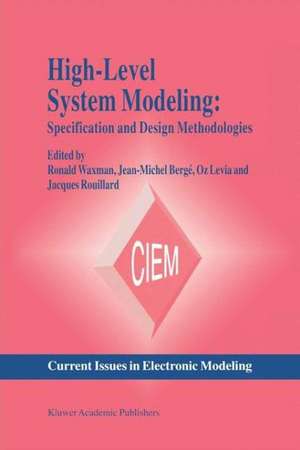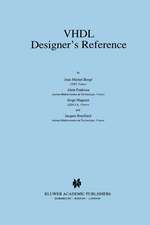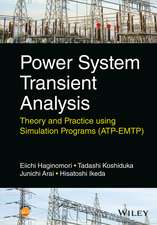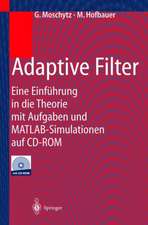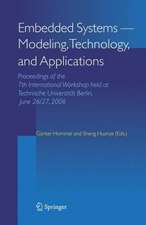High-Level System Modeling: Specification Languages: Current Issues in Electronic Modeling, cartea 3
Editat de Jean-Michel Bergé, Oz Levia, Jacques Rouillarden Limba Engleză Hardback – 30 sep 1995
| Toate formatele și edițiile | Preț | Express |
|---|---|---|
| Paperback (1) | 635.01 lei 43-57 zile | |
| Springer Us – 27 sep 2012 | 635.01 lei 43-57 zile | |
| Hardback (1) | 641.03 lei 43-57 zile | |
| Springer Us – 30 sep 1995 | 641.03 lei 43-57 zile |
Preț: 641.03 lei
Preț vechi: 754.15 lei
-15% Nou
Puncte Express: 962
Preț estimativ în valută:
122.67€ • 127.30$ • 102.54£
122.67€ • 127.30$ • 102.54£
Carte tipărită la comandă
Livrare economică 17-31 martie
Preluare comenzi: 021 569.72.76
Specificații
ISBN-13: 9780792396321
ISBN-10: 0792396324
Pagini: 162
Ilustrații: XVI, 162 p.
Dimensiuni: 155 x 235 x 13 mm
Greutate: 0.44 kg
Ediția:1995
Editura: Springer Us
Colecția Springer
Seria Current Issues in Electronic Modeling
Locul publicării:New York, NY, United States
ISBN-10: 0792396324
Pagini: 162
Ilustrații: XVI, 162 p.
Dimensiuni: 155 x 235 x 13 mm
Greutate: 0.44 kg
Ediția:1995
Editura: Springer Us
Colecția Springer
Seria Current Issues in Electronic Modeling
Locul publicării:New York, NY, United States
Public țintă
ResearchCuprins
1. Specification-Modeling Methodologies for Reactive-System Design.- 1.1. Introduction.- 1.2. Characteristics of Reactive Systems.- 1.3. Specification-Modeling Methodology Requirements.- 1.4. Specification-Modeling Methodology for Reactive Systems.- 1.5. A Survey of Methodologies.- 1.6. Summary.- 1.7. Recommendations.- 1.8. Conclusions.- 2. Survey on Languages for Object Oriented Hardware Design Methodologies.- 2.1. Introduction.- 2.2. Introduction to Object-Oriented Design.- 2.3. Possible Approaches.- 3. VSPEC: A Declarative Requirements Specification Language for VHDL.- 3.1. Introduction.- 3.2. Important VHDL Constructs.- 3.3. The VSPEC Clauses.- 3.4. Formal Representation of VSPEC.- 3.5. Extended Example: 16-bit Move Machine.- 3.6. Related Work.- 3.7. Current Status and Future Directions.- 4. Communication Protocols Implemented in Hardware: VHDL Generation from Estelle.- 4.1. Introduction.- 4.2. VHDL versus Estelle Semantics.- 4.3. Estelle to VHDL Translation Model.- 4.4. Conclusions.- 5. An Algorithm for the Translation of SDL into Synthesizable VHDL.- 5.1. Introduction.- 5.2. The SDL Subset.- 5.3. Synthesis Constraints.- 5.4. The Mapping Algorithm.- 5.5. Structure.- 5.6. Data Definition.- 5.7. Process Communication.- 5.8. Process Behaviour.- 5.9. Variable Declaration.- 5.10. Example of Implementation.- 5.11. Conclusion.- 6. From LOTOS to VHDL.- 6.1. Introduction.- 6.2. Languages.- 6.3. Translation.- 6.4. Conclusion.- 6.5. Appendix: A Complete Example.- 7. Using an X-Machine to Model a Video Cassette Recorder.- 7.1. Introduction.- 7.2. The Basic Model.- 7.3. Extending the Machine to handle Fast-forward and Rewind Operations.- 7.4. Programming the VCR.- 7.5. Combining the Parts of the Model.- 7.6. Adding a Model of the Video Tape.- 7.7. Animation and Execution of theSpecification.- 7.8. Verification Issues.- 7.9. Evaluation and Conclusion.
